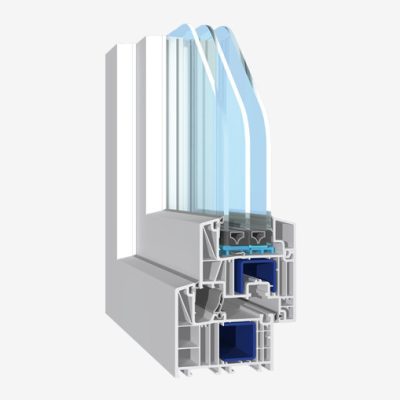Heating and hot water costs take up the lion’s share of the household budget. However, it turns out that by changing existing solutions to contemporary technologies, it is possible to create buildings that are much cheaper to operate, as well as being more comfortable for users and more environmentally friendly. This is achieved through better thermal insulation and solutions that reduce heat loss, as well as the use of more efficient heating sources.
It is worth starting the thermomodernisation of a building with insulation, if it has not been done before, or with additional insulation and replacement of uneconomical elements. Several important issues should be taken care of during this stage. Insulating external walls involves installing an insulating layer to prevent the interior of the building from getting too cold or too hot. If the insulation is made using older methods and no longer meets modern standards, it is worth insulating the house by installing thermal insulation boards on top of the existing insulation. This will reduce heat consumption by approx. 10 to 25%. Replacing windows and doors with new ones with good insulation properties. Thanks to this activity, you can get rid of thermal bridges through which heat escapes. Replacing windows with more airtight ones with a lower thermal transmittance coefficient saves an additional 10-15%. Insulation of the roof, which can sometimes be unnecessary, but if the existing insulation is of dubious quality, it sometimes allows heat loss to be reduced by up to several dozen percent. Another extremely important element of building thermomodernisation is the improvement or replacement of the heat source (boiler room or heating centre) and the installation of control automation. A common disadvantage of older boilers is their low efficiency. Modernisation of a boiler room usually consists of replacing an old or uneconomical boiler with a modern one or equipping an existing boiler with automatic control devices to increase its efficiency. It should be remembered that the old boiler should be replaced with a new heating device after the building has been insulated. It may turn out that the power of the device needed to meet the current demand for heat is much lower. In an insulated building, it can be up to half the power of a non-insulated building.
One of the elements of thermomodernisation of a building is the improvement of the ventilation system. Traditional natural ventilation, known as gravitational ventilation, has several disadvantages. The main one is the lack of adjustability and the inability to ensure the necessary air cleanliness in rooms. These disadvantages are eliminated by mechanical ventilation, where air exchange takes place thanks to the operation of fans. It is an energy-saving system that allows the intensity of air exchange to be adjusted according to usage needs.
In addition to energy-saving devices and solutions, devices that use renewable energy sources, i.e. photovoltaic systems and heat pumps, are becoming increasingly popular. Photovoltaic systems, which produce electricity using the sun, form an independent system when connected to a heating device (e.g. a heat pump), where the costs of heating or preparing hot water are reduced to virtually zero.
For many of the listed investments in home thermomodernisation, subsidies can be obtained under the Clean Air programme. Sometimes there are also other possibilities to reduce costs, such as thermomodernisation relief or local anti-smog programmes. Read also:Insulation or re-insulation of a building
External partitions
Windows and doors
Insulation of roof surfaces
Modernisation of the heating system
Ventilation system
Environmentally friendly systems
Thermal modernisation – what is worth knowing about it?
Polecane produkty

Salamander Bluevolution 73

Salamander Bluevolution 82

